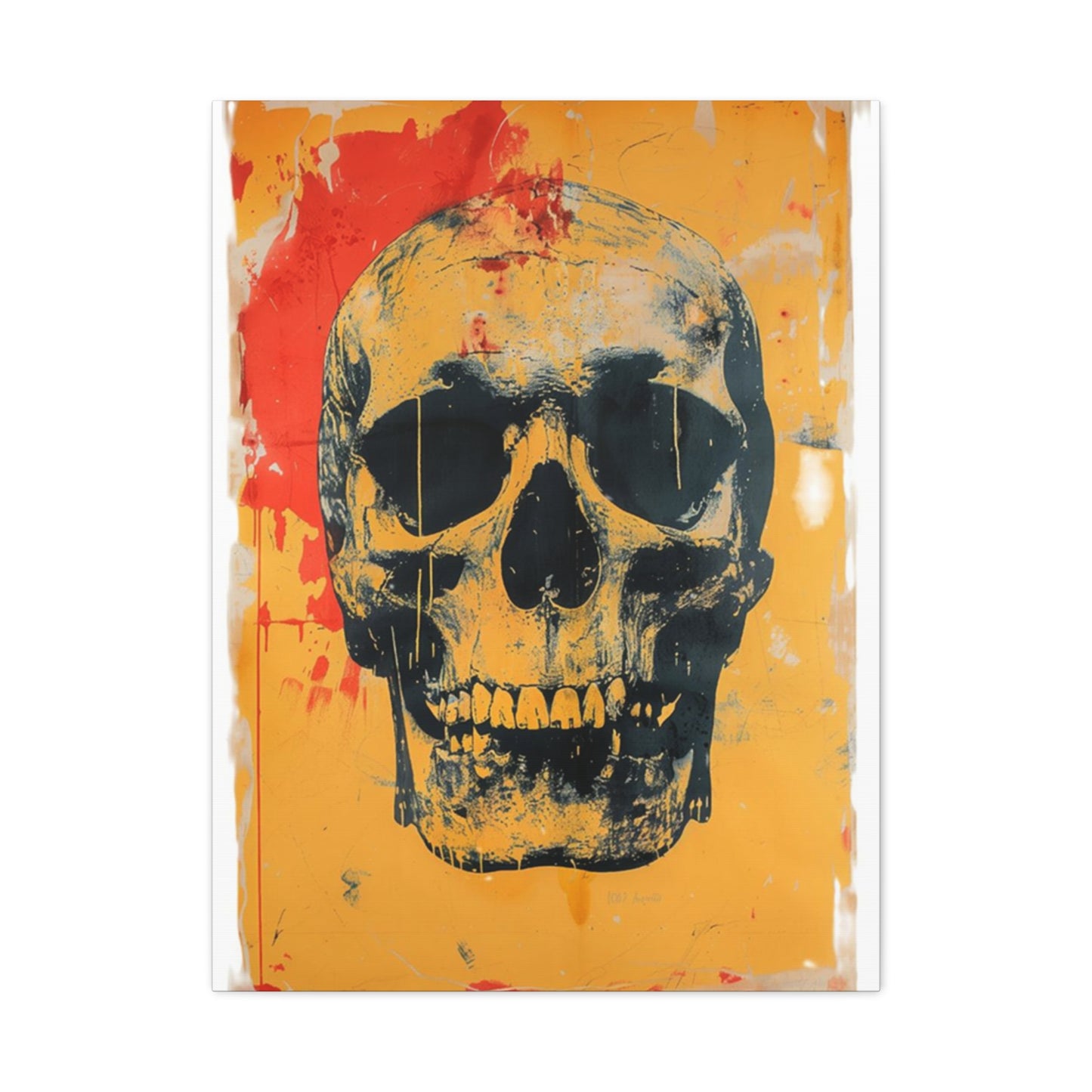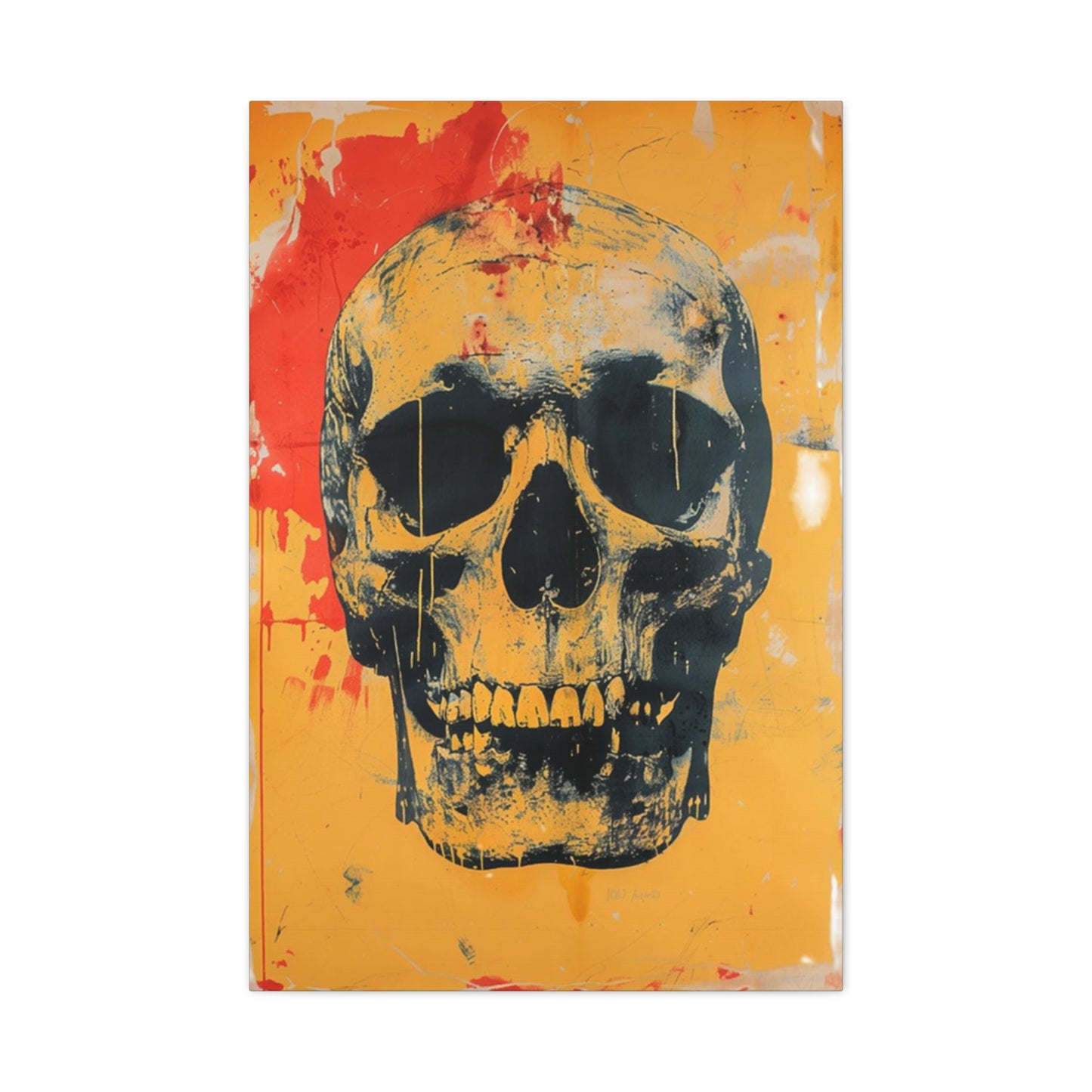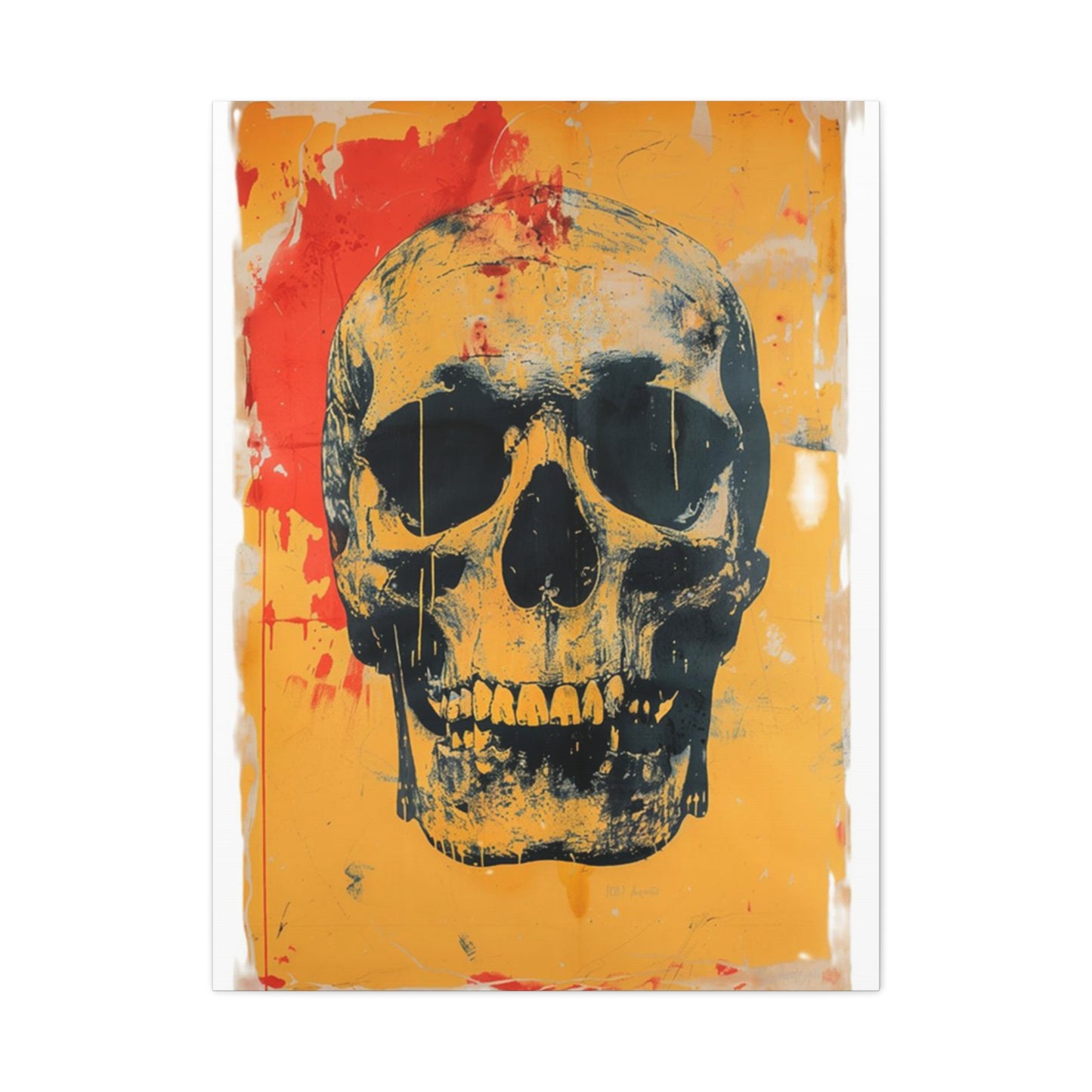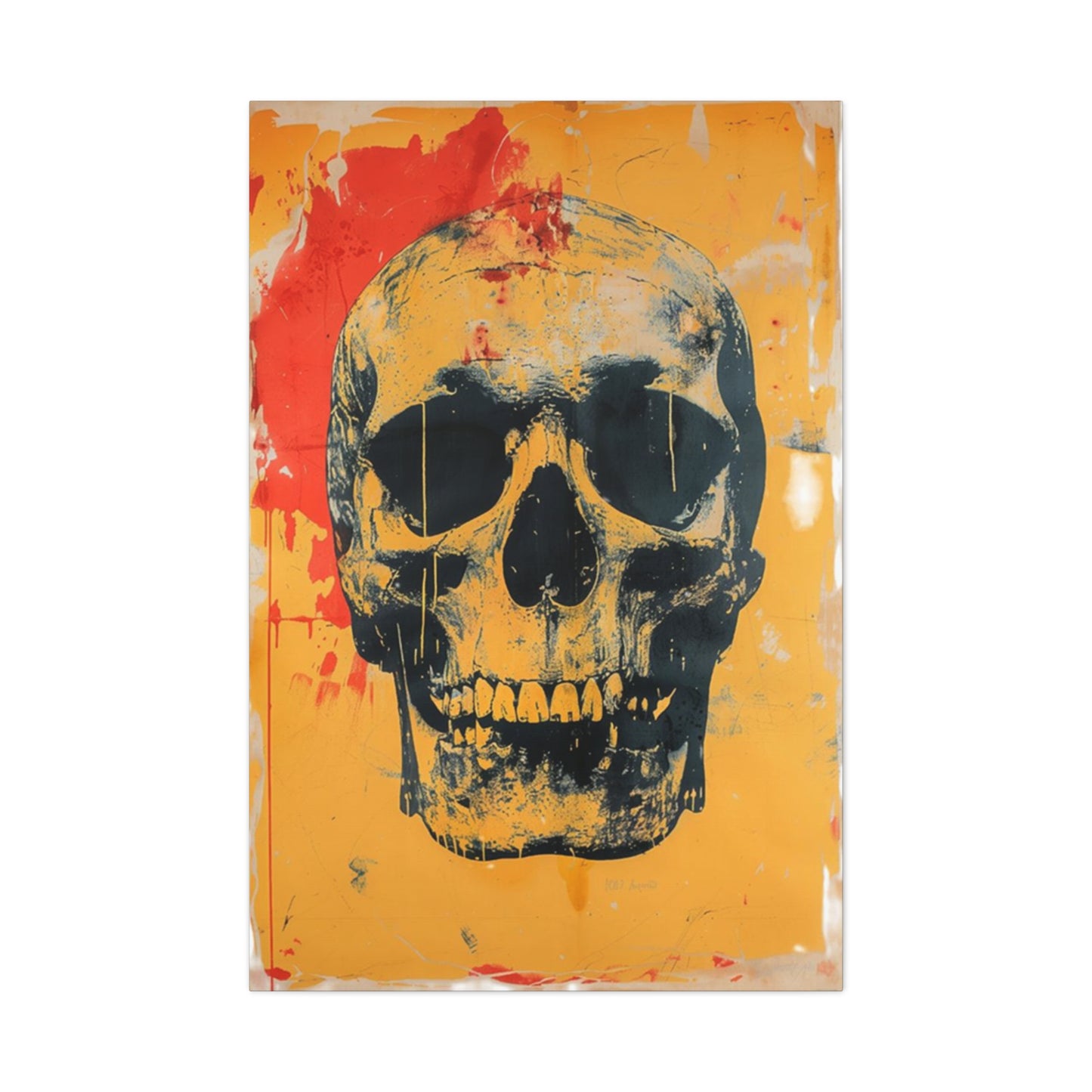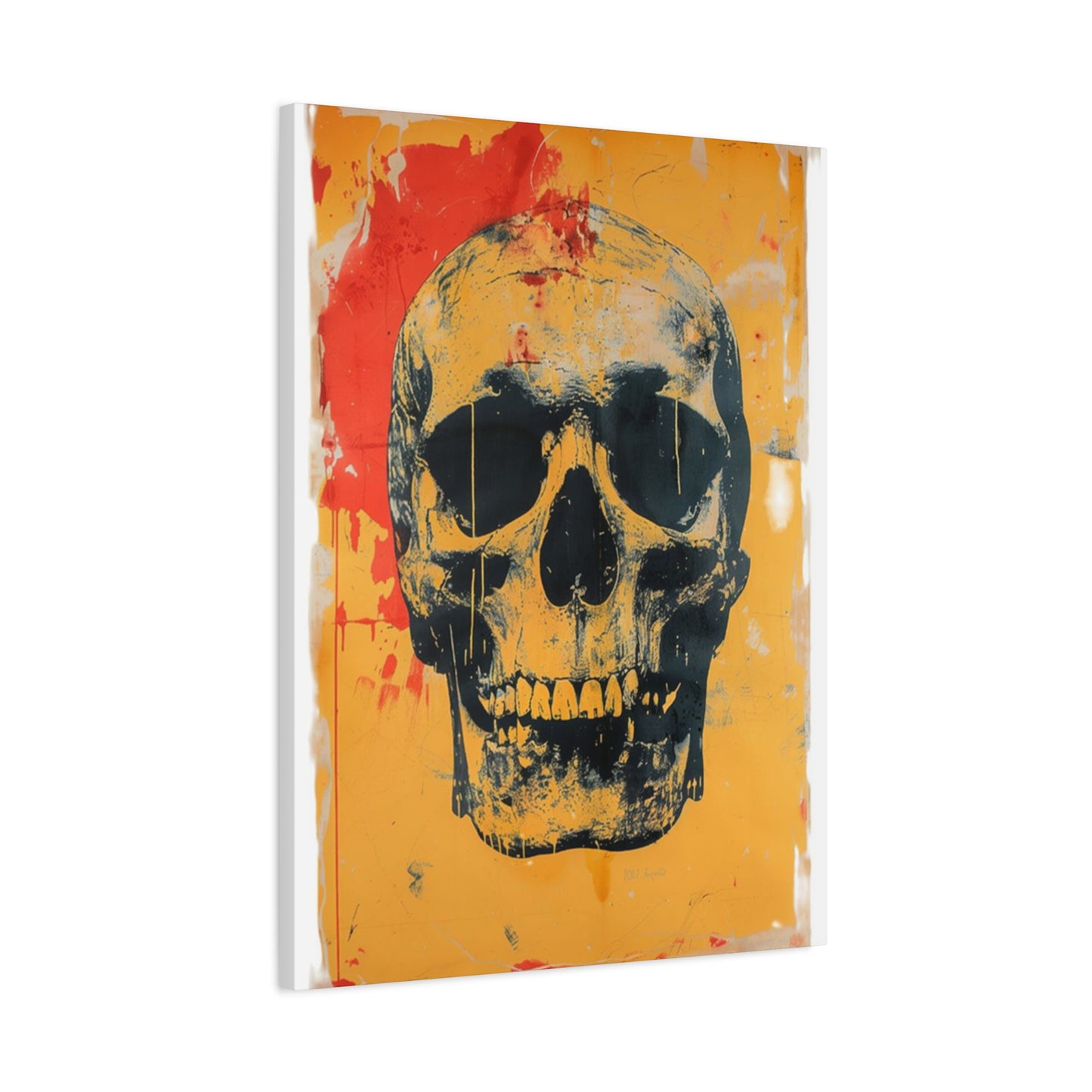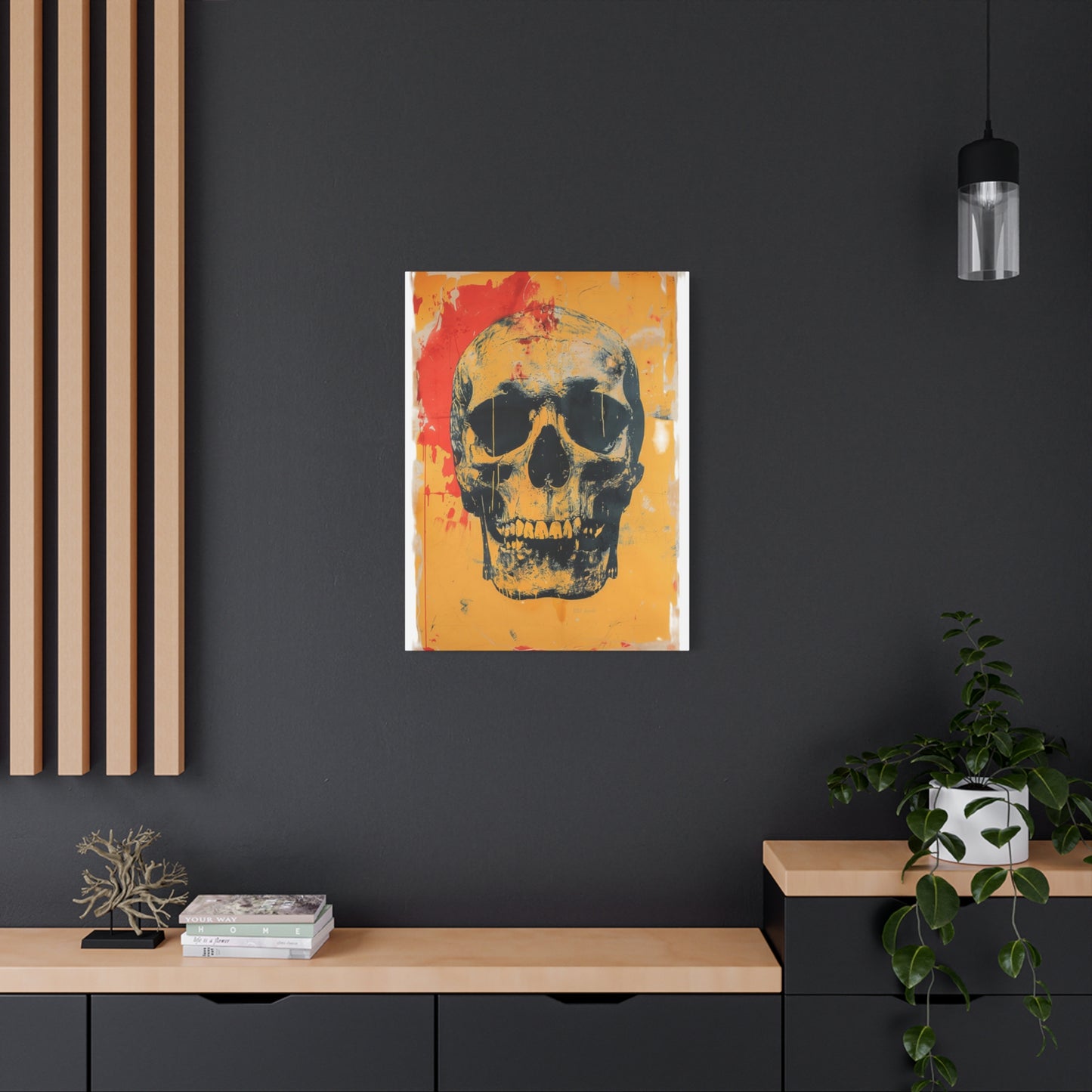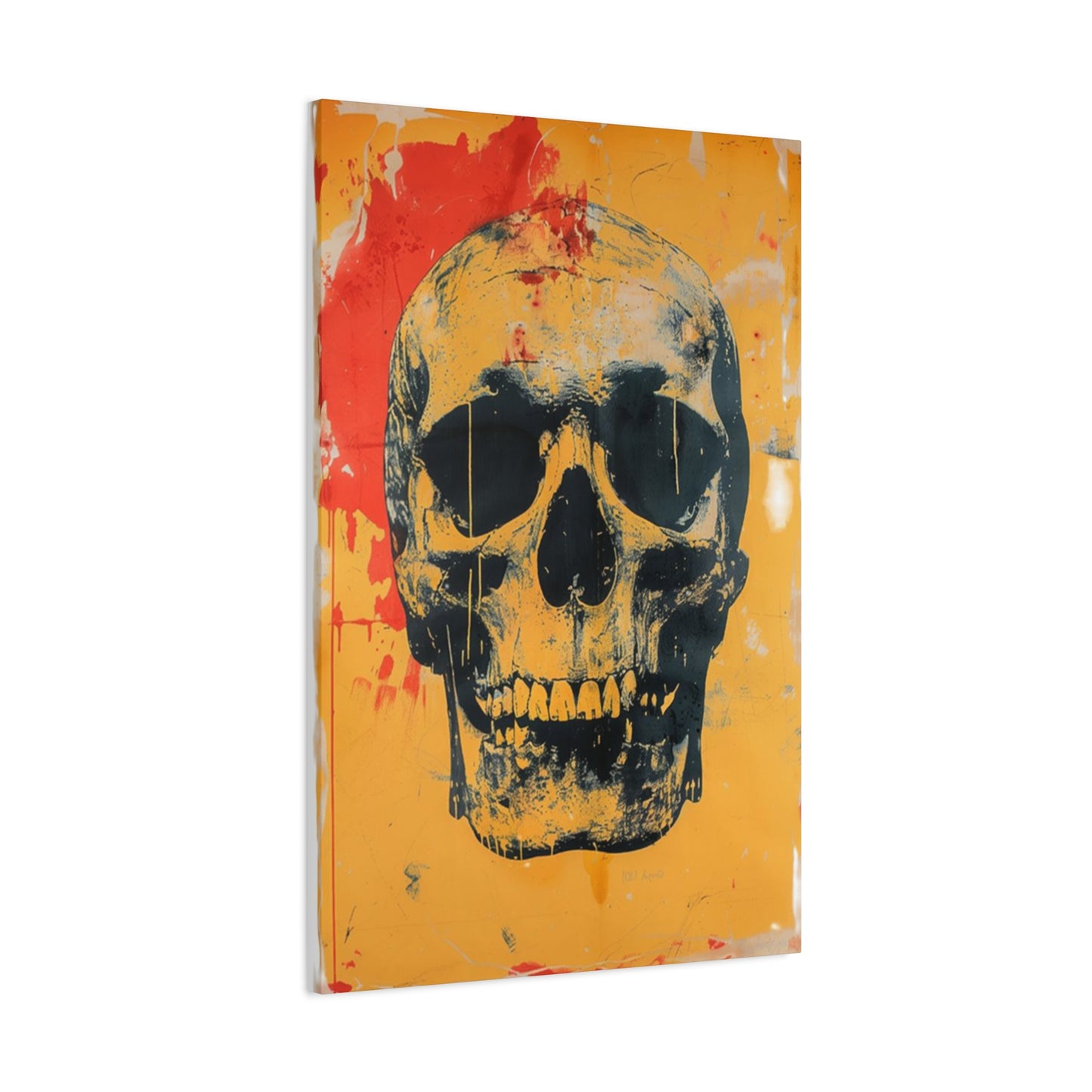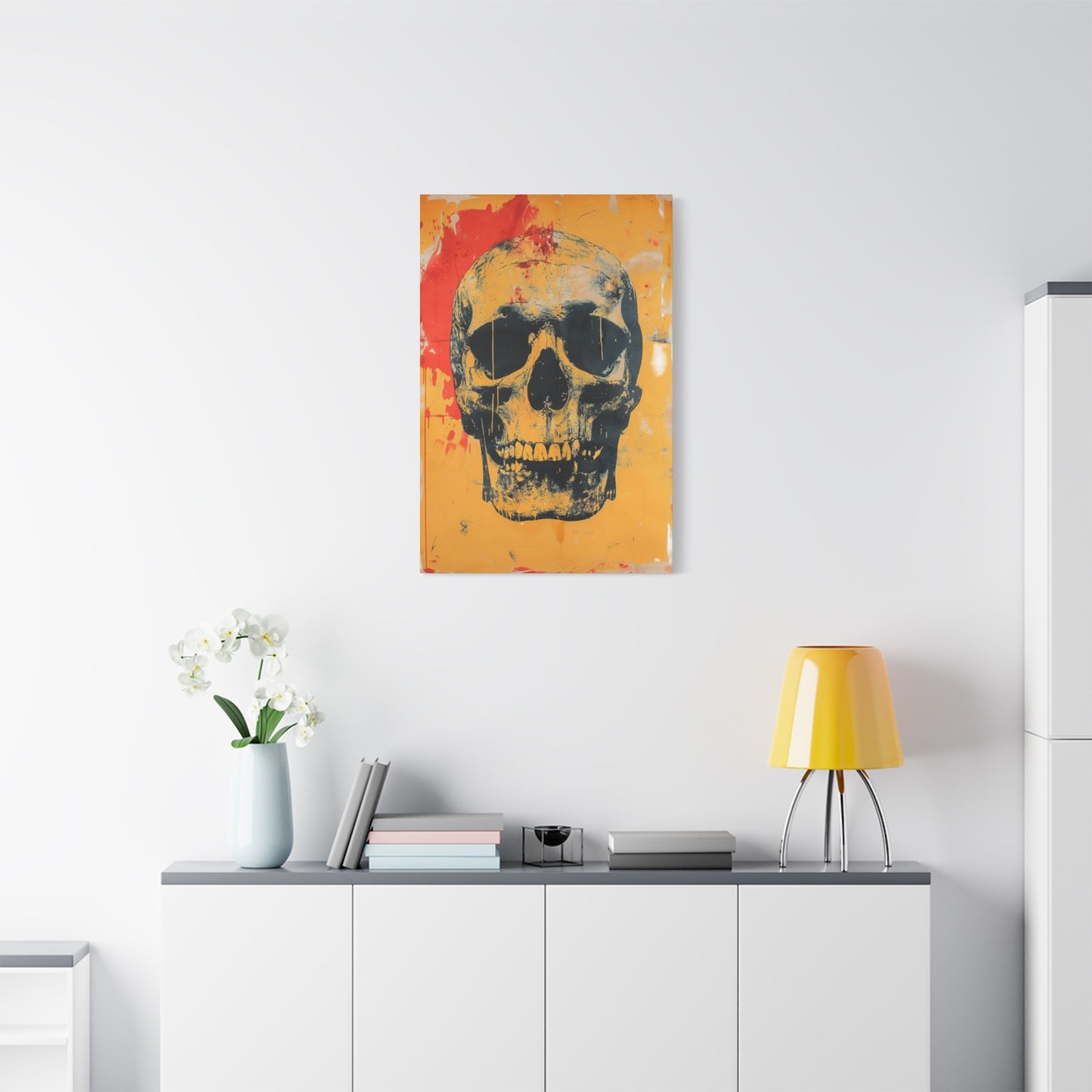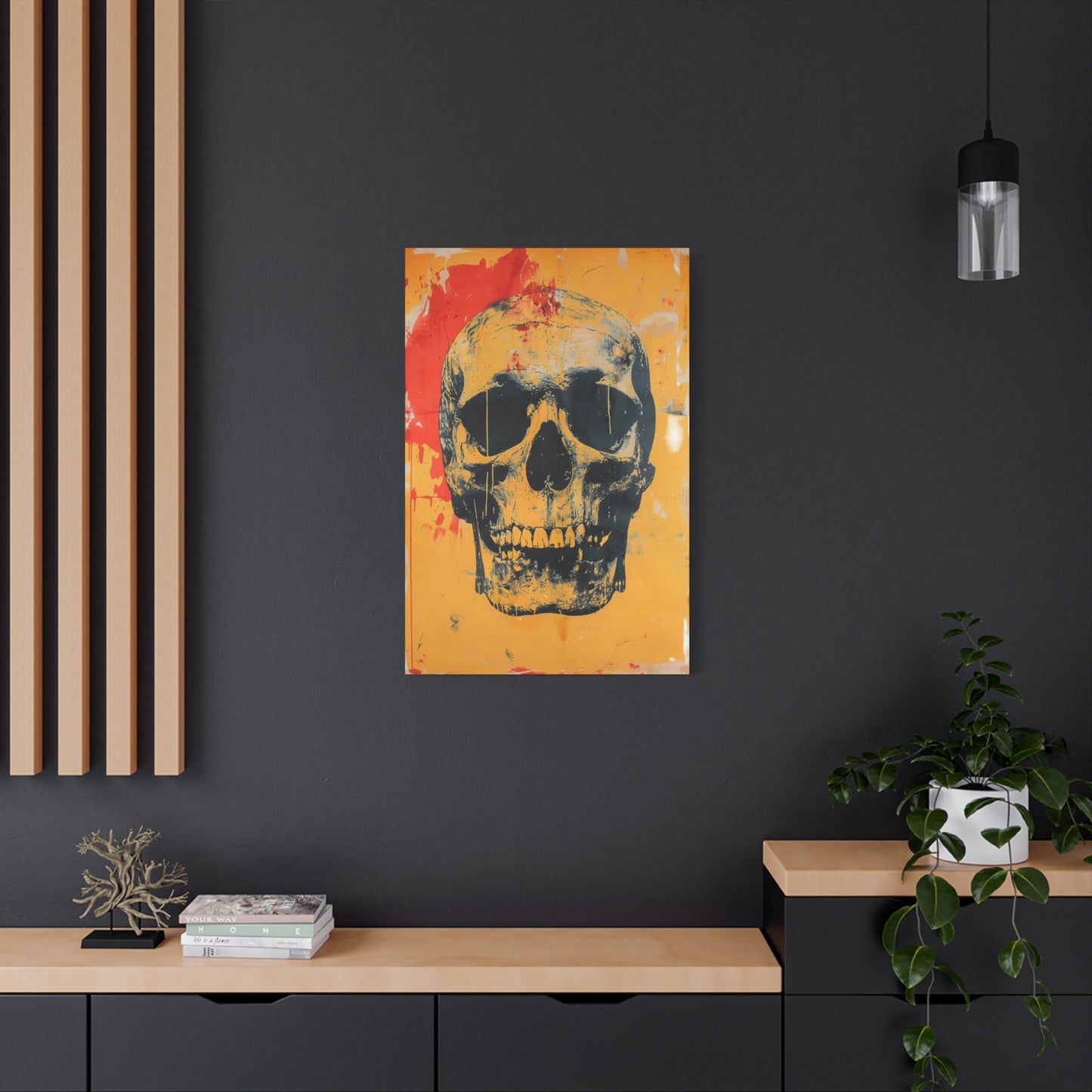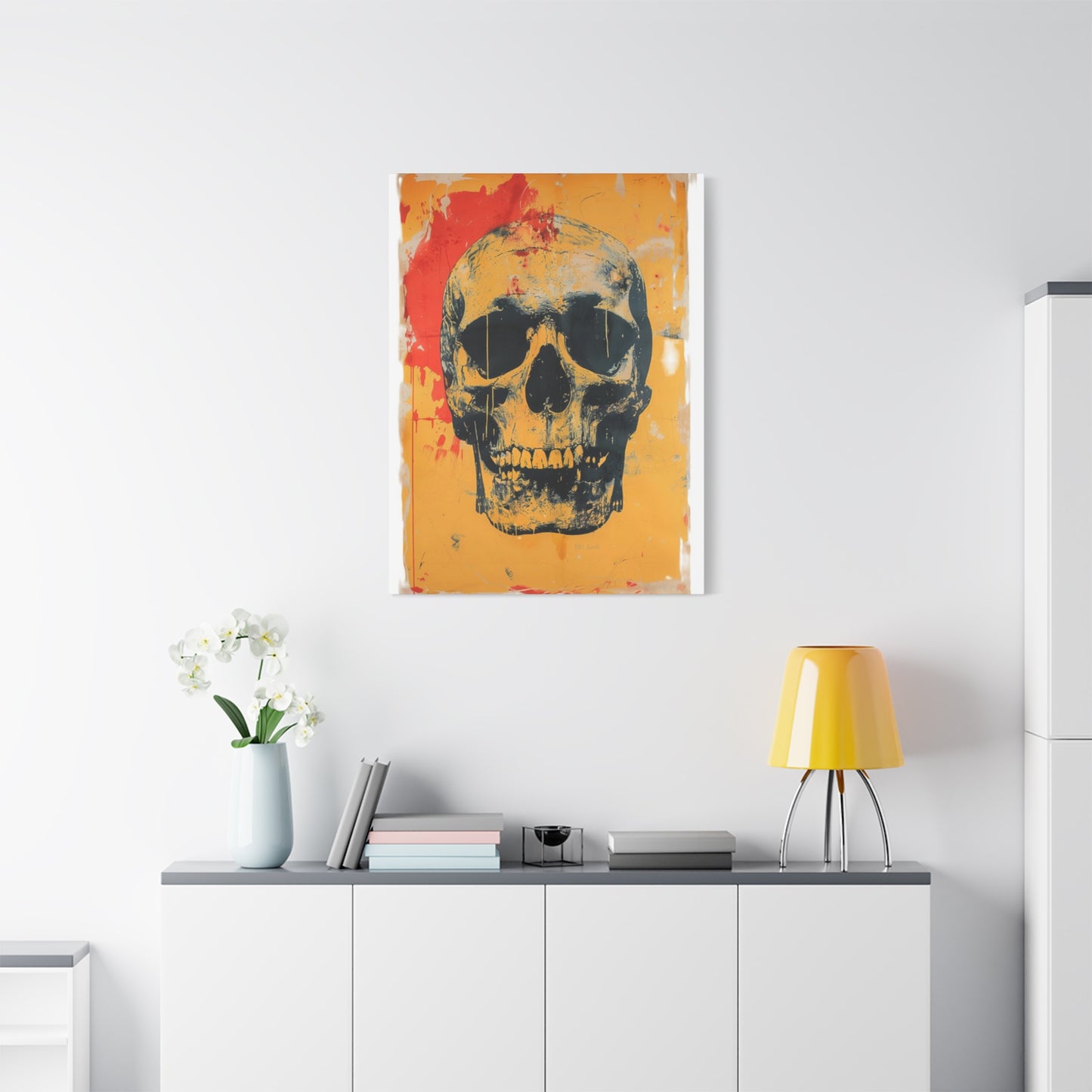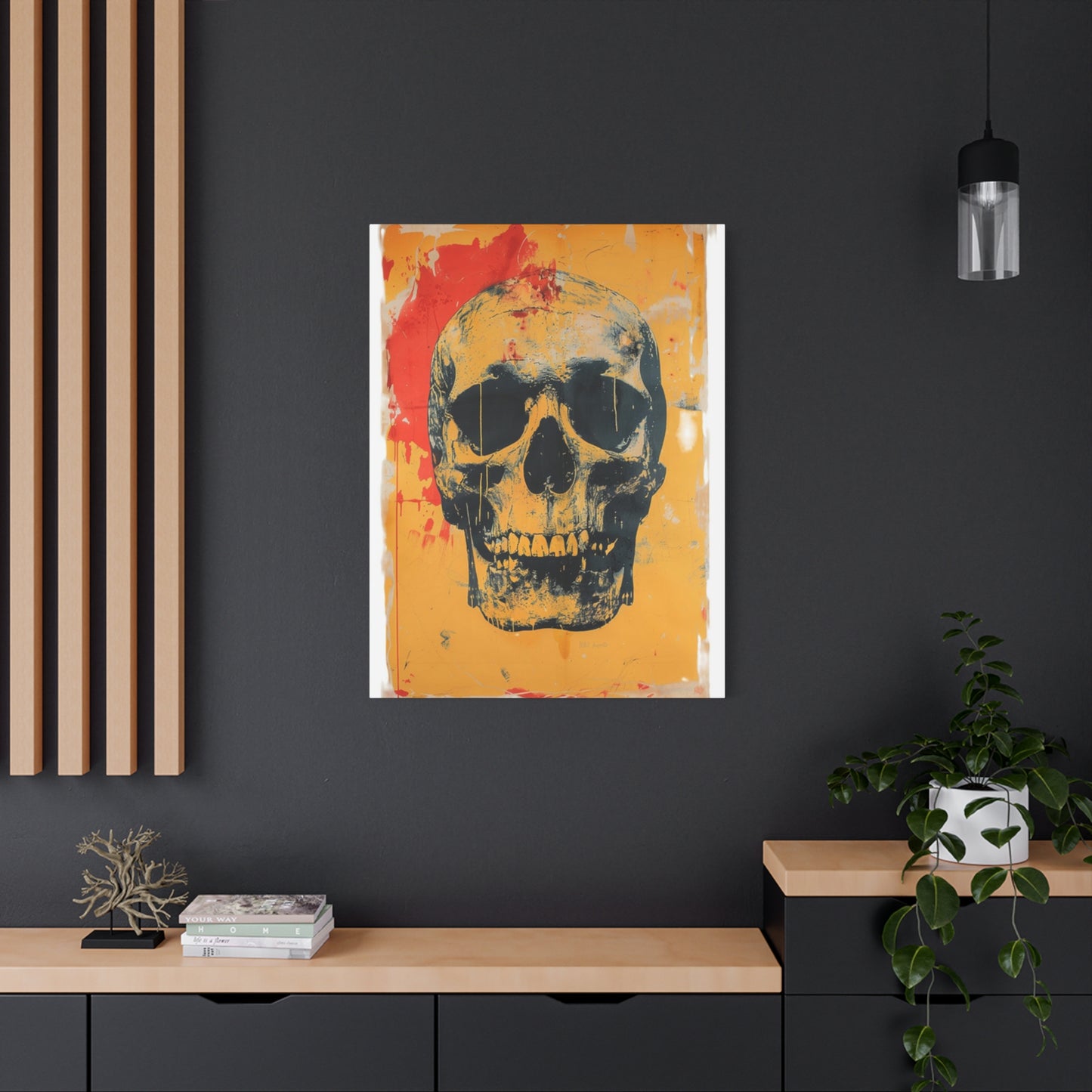Skull Poster Wall Art: Revolutionary Ways to Transform Your Space with Bold Imagery
The realm of interior decoration has witnessed a dramatic shift toward embracing imagery that challenges conventional notions of beauty and aesthetics. Among the most compelling trends capturing the attention of design enthusiasts, collectors, and homeowners alike is the incorporation of skeletal imagery into living spaces. This particular form of artistic expression transcends mere shock value, instead offering profound opportunities for personal expression, philosophical reflection, and striking visual impact that transforms ordinary rooms into extraordinary environments.
The fascination with cranial imagery in decorative arts stretches back through centuries of human culture, appearing in everything from ancient religious ceremonies to medieval artistic traditions and contemporary street art movements. Today's interpretations draw upon this rich historical foundation while incorporating modern design sensibilities, digital artistry techniques, and innovative printing technologies. The result is a diverse marketplace offering everything from photorealistic anatomical renderings to abstract interpretations, minimalist line drawings to explosive color-saturated designs, ensuring options exist for every aesthetic preference and interior design philosophy.
What makes this particular category of decorative artwork so compelling is its inherent versatility and the multiple layers of meaning viewers can extract from these powerful images. For some, the imagery represents philosophical contemplation of mortality and the transient nature of existence. Others appreciate the pure aesthetic qualities, the intricate organic architecture, or the rebellious edge these pieces bring to conventional spaces. Medical professionals might display anatomically accurate versions as celebration of their field, while music enthusiasts connect these visuals to various cultural movements. The beauty lies in how each viewer brings personal interpretation to these universally recognizable forms.
The technical evolution of printing technologies has democratized access to museum-quality reproductions and original designs, allowing anyone to curate gallery-worthy collections regardless of budget constraints. From affordable paper prints suitable for temporary installations to investment-grade canvas pieces that become permanent fixtures, the range of available options accommodates every level of commitment and financial investment. This accessibility has contributed to the widespread adoption of skeletal imagery in mainstream interior design, moving these once-niche decorative elements into homes, offices, commercial spaces, and public venues worldwide.
Aesthetic Revolution Through Anatomical Imagery
The human skeleton represents one of nature's most remarkable architectural achievements, a framework of elegant curves, complex joints, and structural efficiency that has inspired artists throughout recorded history. When translated into two-dimensional artwork, these forms create immediate visual interest through their combination of familiar recognition and inherent drama. The eye naturally traces the contours, explores the negative spaces between structures, and appreciates the organic symmetry that characterizes these designs.
Contemporary artists working with skeletal themes employ vastly different approaches to their subject matter, each bringing unique perspectives and technical skills to their interpretations. Some creators pursue photographic accuracy, rendering every subtle texture and dimensional variation with meticulous attention to anatomical correctness. These pieces appeal to viewers who appreciate technical mastery and scientific precision, functioning almost as educational tools while simultaneously serving decorative purposes. The dedication required to achieve this level of detail demonstrates profound respect for both artistic craft and biological complexity.
Conversely, other artists embrace abstraction and stylization, reducing cranial forms to essential geometric components or reimagining them through surrealist lenses. These interpretive approaches free creators from constraints of literal representation, allowing experimentation with proportion, color relationships, and compositional structures that would be impossible in realistic renderings. The resulting pieces often carry stronger emotional impacts precisely because they prioritize feeling and atmosphere over documentary accuracy. Viewers respond to the energy and vision rather than evaluating technical correctness.
The interplay between positive and negative space reaches particular sophistication in skeletal artwork. The natural voids within the structure create opportunities for creative background treatments, layered imagery, or strategic use of empty space that enhances overall composition. Skilled artists manipulate these relationships to direct viewer attention, create visual rhythm, and establish focal points that prevent compositions from becoming static or boring despite featuring relatively simple core subjects.
Color theory application separates exceptional pieces from ordinary productions. While monochromatic treatments emphasizing dramatic contrasts remain popular and effective, the introduction of color opens entirely new expressive possibilities. Unexpected hues transform familiar forms into alien landscapes, while naturalistic tones ground abstract compositions in biological reality. The psychological associations various colors carry influence how viewers respond emotionally to pieces, with warm palettes creating entirely different feelings than cool ones, and saturated brights projecting different energy than muted earth tones.
Texture consideration adds another dimension to how these pieces function within spaces. Smooth, flat printing creates clean contemporary appearances, while techniques that build surface variation through layered inks, embossing, or mixed media approaches generate tactile interest that rewards close examination. The choice between these approaches should consider viewing distances, lighting conditions, and the overall sensory experience desired within particular rooms. Textured surfaces catch and reflect light dynamically, creating subtle animation as viewers move past or as natural light shifts throughout the day.
The scale of individual pieces dramatically affects their impact and appropriate placement within spaces. Oversized works commanding entire walls create immersive experiences that dominate their environments, making powerful statements about the occupant's aesthetic courage and design vision. Medium-sized pieces offer greater flexibility, working as focal points in smaller rooms or as components of larger gallery wall arrangements. Even small-scale prints contribute effectively when thoughtfully clustered or positioned in intimate viewing situations where their details can be appreciated.
Exploring Cultural Symbolism and Historical Context
The appearance of skeletal imagery across diverse cultures throughout human history reveals universal human preoccupation with mortality, spirituality, and the physical structures that literally support our existence. Ancient civilizations incorporated these forms into religious art, using them to represent gods, commemorate ancestors, or symbolize the transition between earthly life and whatever lies beyond. Medieval European art featured skeletal figures prominently in memento mori traditions, reminding viewers of life's brevity and encouraging virtuous living.
Mexican cultural traditions particularly embrace cranial imagery through Day of the Dead celebrations, transforming potentially morbid symbols into joyful celebrations of life and remembrance. The decorated sugar skulls and elaborate artistic representations associated with these traditions demonstrate how cultural context completely transforms symbolic meaning. What might appear somber in one cultural framework becomes festive celebration in another, illustrating the importance of understanding various perspectives when appreciating this artwork.
The adoption of skeletal imagery by various subcultures throughout the twentieth and twenty-first centuries added layers of meaning beyond traditional cultural associations. Rock music communities embraced the symbolism as representation of rebellion against mainstream values and acceptance of life's darker realities. Alternative fashion movements incorporated these visuals as statements of non-conformity and individual identity assertion. These associations continue to resonate, making the imagery particularly appealing to those who identify with counterculture values or simply appreciate edgier aesthetic expressions.
Contemporary interpretation often strips away specific cultural or subcultural associations, treating cranial forms purely as aesthetic objects appreciated for their inherent visual qualities. This evolution allows the imagery to function in diverse contexts without carrying heavy symbolic weight, making it accessible to broader audiences who might appreciate the forms without necessarily connecting to their various cultural meanings. The separation of form from traditional meaning represents a particularly postmodern approach to symbolic imagery.
Understanding historical and cultural contexts enriches appreciation without necessarily constraining interpretation. A viewer might respond primarily to compositional elements, color relationships, or technical execution while remaining completely unaware of deeper symbolic traditions. This multi-layered accessibility explains much of the current popularity; the imagery works on whatever level viewers choose to engage with it, from pure surface aesthetics to profound philosophical contemplation.
The educational potential of anatomically accurate skeletal artwork deserves recognition beyond its decorative applications. Medical students, healthcare professionals, and anyone interested in human biology can benefit from having detailed anatomical representations readily visible in their environments. The combination of educational value and aesthetic appeal creates unique justification for displaying such pieces in professional settings where pure decoration might seem frivolous but educational tools are entirely appropriate.
The philosophical dimensions of displaying skeletal imagery in living spaces invite interesting contemplation. These forms remind us of physical mortality while simultaneously celebrating the incredible biological machinery that enables conscious experience. This duality creates rich ground for reflection on existence, meaning, and the relationship between physical form and conscious identity. Spaces featuring this artwork can promote deeper thinking and more meaningful conversation than environments filled with purely decorative elements lacking conceptual weight.
Minimalist Approaches to Maximum Visual Impact
Within the broad category of skeletal artwork, minimalist interpretations have achieved particular prominence and popularity among contemporary design enthusiasts. These pieces embrace simplicity, reducing complex organic forms to essential lines and shapes while maintaining instant recognizability. The restraint demonstrated in these works requires exceptional artistic judgment, as every eliminated detail must not be necessary for communication while every retained element must justify its presence through functional contribution.
The philosophy underlying minimalist design recognizes that visual clutter creates mental fatigue and that carefully edited imagery allows viewers to process and appreciate what remains more fully. In skeletal artwork, this approach might reduce a complex three-dimensional form to a simple profile outline or even more radically abstract the subject to a few characteristic curves and angles. Despite extreme simplification, skilled artists ensure these reduced forms retain essential character and immediate recognizability.
Line quality becomes paramount in minimalist skeletal artwork where every stroke carries significant communicative weight. Artists working in this mode develop exceptional control over their tools, creating lines that vary subtly in width and character to suggest dimensionality and form without explicit shading or modeling. The confidence evident in clean, deliberate marks communicates mastery that viewers instinctively recognize even without technical art training.
The relationship between figure and ground, positive and negative space, reaches heightened importance in minimalist compositions. With fewer elements competing for attention, the empty areas become active participants in the overall design rather than merely serving as neutral backgrounds. Strategic manipulation of these voids creates visual interest, establishes balance, and can even suggest elements not explicitly depicted through viewer imagination filling perceived gaps.
Color choices in minimalist skeletal art typically favor limited palettes that enhance rather than complicate the simplified forms. Classic black-on-white combinations provide maximum contrast and timeless appeal suitable for virtually any interior design scheme. Reversing to white-on-black creates more dramatic, sophisticated appearance appropriate for modern spaces featuring darker color palettes. Introduction of single accent colors adds focal points without undermining the essential minimalist restraint.
The versatility of minimalist skeletal designs makes them particularly valuable for coordinated decorating approaches. The same basic design can be reproduced at various scales, in different color treatments, or with minor variations to create cohesive visual themes across multiple rooms or throughout entire homes. This consistency helps unify spaces while the inherently interesting subject matter prevents monotony that might result from excessive repetition of less compelling imagery.
Contemporary digital culture particularly favors minimalist imagery for its clarity at various sizes and on different display media. These designs translate effectively to small screens, social media profile images, and various digital applications while maintaining full impact as large-scale physical prints. This cross-platform effectiveness reflects and reinforces broader cultural movements toward visual simplification and direct communication in increasingly information-saturated environments.
Creating Dramatic Focal Points in Modern Interiors
Strategic placement and presentation of skeletal artwork can transform rooms from pleasant but forgettable spaces into memorable environments that reflect occupant personality and design sophistication. The key lies in thoughtful integration that considers relationships between artwork, architecture, furnishings, and overall spatial flow. When executed successfully, the art becomes essential to the room's character rather than appearing as afterthought decoration applied without sufficient consideration.
The selection of wall location for major pieces requires analysis of natural sight lines, traffic patterns, and architectural features. Prime positions typically include walls immediately visible upon entering rooms, areas above primary seating arrangements, or architectural focal points like fireplaces that already draw attention. Placing significant artwork in these locations leverages existing visual hierarchy rather than fighting against natural room dynamics.
Lighting dramatically affects how skeletal artwork presents and the mood it creates within spaces. Natural daylight reveals details and creates different appearances throughout the day as sunlight angles shift, adding temporal variation that prevents static environments. Artificial lighting offers more control, with options ranging from ambient room lighting that illuminates art as part of the overall environment to dedicated picture lights or track fixtures that spotlight specific pieces for maximum dramatic impact.
The interaction between artwork and surrounding wall color requires careful consideration. Skeletal imagery on white or light neutral backgrounds creates different effects than the same pieces against dark or saturated colored walls. Light backgrounds emphasize the imagery itself, allowing details and line work to read clearly. Dark backgrounds create more dramatic, sophisticated atmospheres where the art appears to emerge from shadow, generating increased visual impact through contrast.
Framing choices significantly influence how pieces present and integrate into their environments. Simple, minimalist frames maintain focus on artwork while providing finished edges and slight dimensional depth. More elaborate frames can elevate pieces to fine art status but risk overwhelming the imagery if not carefully matched to both the art and surrounding decor. In many contemporary contexts, frameless mounting or gallery-wrapped canvas provides appropriately clean, modern presentation.
Gallery wall arrangements featuring multiple skeletal pieces create opportunities for visual storytelling and increased impact through accumulated effect. Successful multi-piece displays require attention to spacing, alignment, and relationships between individual works. Whether arranged in rigid grids suggesting order and control or more organic clusters implying casual curation, the overall composition should feel intentional and balanced. Mixing skeletal imagery with complementary subjects or styles adds complexity and prevents collections from becoming monotonous.
The psychological impact of skeletal artwork varies considerably based on presentation context and surrounding design elements. Pieces displayed in bright, cheerful rooms with colorful accents carry entirely different connotations than identical artwork in dark, moody spaces with industrial materials and minimal color. This contextual flexibility allows the same core imagery to support vastly different design intentions and emotional atmospheres.
Anatomical Accuracy Meets Artistic Expression
The pursuit of anatomical precision in skeletal artwork appeals particularly to those who appreciate the intersection of art and science. These pieces celebrate the incredible structural complexity resulting from evolutionary processes, treating the subject with reverence appropriate to one of nature's most remarkable achievements. Artists creating in this mode often possess or develop deep understanding of osteology, ensuring their renderings withstand scrutiny from knowledgeable viewers while remaining aesthetically compelling to general audiences.
Reference materials for anatomically accurate skeletal artwork have never been more accessible, with high-resolution medical imaging, detailed anatomical texts, and three-dimensional digital models available to contemporary artists. This wealth of reference enables unprecedented accuracy while also raising viewer expectations regarding correctness. Artists working in this realistic mode must balance dedication to accuracy with artistic considerations of composition, lighting, and visual interest that transform scientific illustration into compelling art.
The challenge in creating scientifically accurate yet artistically successful work lies in making inherently static subject matter visually dynamic. Skeletal structures photographed or rendered in neutral orientations without context can appear lifeless and uninteresting despite their intricate detail. Skilled artists solve this problem through dramatic lighting, unusual viewing angles, selective focus that emphasizes particular features, or incorporation of contextual elements that create narrative interest without compromising anatomical accuracy.
Lighting treatment separates competent realistic renderings from exceptional ones that achieve fine art status. The play of light across complex curved surfaces, the way shadows accumulate in deep recesses, the subtle reflected light that prevents absolute blackness in shadowed areas all require careful observation and skilled execution. These lighting effects create dimensionality and visual drama that activate surfaces and guide viewer attention through compositions.
Texture representation adds another layer of complexity to realistic skeletal artwork. While many people imagine bone as uniformly smooth and white, reality involves considerable surface variation including rough areas, subtle porosity, wear patterns, and coloration variations. Including these details increases realism and visual interest while demonstrating the artist's dedication to faithful representation. However, excessive texture detail can become visually noisy, requiring judgment about when accuracy serves artistic goals and when simplification improves overall effect.
The decision to depict complete structures versus isolated elements affects both composition and meaning. Full skeletal representations create comprehensive portraits emphasizing overall form and proportion, while focusing on specific sections allows greater detail and can create more abstract, less literal compositions. Isolated cranial depictions, for instance, carry different symbolic weight and work differently as decorative elements than complete skeletal figures.
Background decisions in realistic skeletal artwork range from clinical white resembling medical illustration to elaborately rendered environments that contextualize the subject. Plain backgrounds maintain focus on the anatomical subject while suggesting scientific objectivity. Environmental contexts create narrative opportunities and can dramatically alter interpretation, with natural settings creating different meanings than architectural spaces or abstract color fields. These choices should align with the artist's intended message and the decorative context where work will ultimately display.
Abstract Interpretations and Surrealist Visions
While realistic representation satisfies certain aesthetic preferences and serves specific decorative purposes, abstract and surrealist approaches to skeletal imagery open entirely different creative territories. These interpretations liberate artists from constraints of literal accuracy, allowing exploration of emotional, symbolic, and purely formal concerns. The familiar subject matter provides anchor that prevents complete abstraction from becoming incomprehensible while permitting extensive creative license.
Geometric abstraction reduces organic cranial forms to simplified shapes, planes, and angles that capture essential character while eliminating naturalistic detail. This approach connects skeletal artwork to broader movements in twentieth-century abstraction, from cubist fragmentation to constructivist geometry. The resulting pieces appeal to viewers who appreciate clean, ordered design and the intellectual exercise of recognizing natural forms transformed through geometric lens.
Expressionistic treatments prioritize emotional content over accurate representation, using distortion, exaggeration, and heightened color to convey feelings associated with the subject matter. An expressionist skeletal work might feature elongated proportions suggesting anguish, violent colors communicating rage or passion, or fractured surfaces implying psychological fragmentation. These pieces function more as emotional documents than decorative objects, though their visual intensity certainly creates strong decorative impact.
Surrealist approaches combine skeletal elements with unexpected contexts, impossible situations, or dreamlike atmospheres that challenge rational understanding. A skull might sprout flowers, contain miniature landscapes, or fragment into butterflies in ways that create visual poetry transcending literal meaning. These imaginative reconstructions invite viewers into worlds where normal rules of biology and physics don't apply, creating spaces for contemplation and interpretation.
Pattern and repetition transform individual forms into decorative motifs that emphasize rhythm and visual texture over representation of specific objects. Tessellated skulls creating overall patterns, mandala-like radial arrangements, or kaleidoscopic multiplications create hypnotic effects that draw viewers into meditative examination. These approaches connect skeletal imagery to decorative art traditions across cultures while maintaining contemporary relevance through modern execution.
Mixed media combinations incorporating skeletal elements with typography, floral imagery, geometric patterns, or other visual elements create complex layered compositions that reward extended viewing. These hybrid works function on multiple levels simultaneously, with different elements speaking to different aspects of viewer consciousness. The juxtapositions create meanings greater than any single component could achieve, demonstrating the power of thoughtful compositional complexity.
Digital manipulation and generation technologies enable abstract and surrealist approaches that would be extremely difficult or impossible to achieve through traditional means. Artists can seamlessly combine photographic elements with digital painting, generate complex patterns through algorithmic processes, or create dimensional effects that confuse the boundary between two and three-dimensional space. These technical capabilities support unprecedented creative freedom while requiring no less artistic vision to achieve compelling results.
Color Psychology and Palette Selection
The introduction of color to traditionally monochromatic skeletal imagery dramatically expands expressive possibilities and influences how viewers respond emotionally to pieces. Understanding color psychology principles helps both artists and consumers select works that will achieve desired effects within particular spaces and emotional contexts. The same basic composition rendered in different color schemes can create completely different atmospheres and suit entirely different decorating purposes.
Warm color palettes featuring reds, oranges, and yellows inject energy and passion into skeletal imagery. These hues create immediate visual impact and generate excitement, making them appropriate for spaces intended for social interaction and activity. However, warm colors also advance visually, making pieces feel closer and more present, which should be considered when selecting work for smaller rooms where overwhelming intensity might be undesirable.
Cool palettes built around blues, greens, and purples create calmer, more contemplative moods suitable for spaces intended for relaxation or focused work. These colors recede visually, creating sense of space and distance that can help small rooms feel larger. The psychological associations with water, sky, and natural growth make cool colors feel fresher and less aggressive than warm alternatives, though they can also read as cold or emotionally distant if not balanced properly.
Monochromatic color schemes using variations of single hues create sophisticated, cohesive appearances that avoid the visual chaos multiple competing colors might generate. These approaches work particularly well in minimalist or modern interiors where color restraint aligns with broader design philosophies. The subtle variations within monochromatic palettes create depth and interest without disrupting overall unity and calm.
Complementary color combinations using opposites from the color wheel generate maximum contrast and visual vibration that captures attention and creates dynamic tension. Orange skulls against blue backgrounds or purple forms on yellow fields create eye-catching impact appropriate for statement pieces intended to dominate their spaces. However, these combinations can become visually tiring with extended exposure, making them better suited to spaces occupied briefly rather than for extended periods.
Analogous color schemes using adjacent wheel positions create harmonious relationships that feel natural and comfortable. These combinations provide more visual interest than monochromatic approaches while avoiding the aggressive contrast of complementary pairings. The gentle color transitions feel organic and soothing, making them appropriate for spaces where visual calm is prioritized over dramatic impact.
Unexpected color choices that contradict natural expectations create surprise and interest through violation of assumptions. Bright pink or turquoise cranial imagery challenges viewers to reconsider preconceptions about the subject matter, transforming potentially dark or morbid imagery into playful or whimsical decoration. These unconventional choices particularly appeal to those who appreciate humor, irony, or deliberate subversion of cultural expectations.
Vintage and Retro-Inspired Design Aesthetics
The cyclical nature of design trends ensures that historical styles continuously return to popularity, though typically with contemporary modifications that distinguish revivals from original expressions. Vintage and retro-inspired skeletal artwork taps into nostalgia for various past eras while incorporating modern sensibilities and production techniques. These pieces appeal to collectors who appreciate historical aesthetics but want works that function effectively in contemporary spaces.
Victorian-era aesthetic influences appear in ornately detailed pieces featuring elaborate decorative elements, gothic typography, and the memento mori tradition that flourished during that period. These works often incorporate additional symbolic elements like hourglasses, wilting flowers, or Latin phrases that reinforce meditation on mortality themes. The dense, detailed approach contrasts sharply with minimalist contemporary styles, offering rich visual complexity for those who find sparse modern design unsatisfying.
Mid-century modern influences create cleaner, more streamlined interpretations that reflect that era's embrace of simplified forms and functional design principles. These pieces might feature geometric stylization, limited color palettes, and compositional approaches drawn from advertising and graphic design of the period. The accessibility and optimism characteristic of mid-century aesthetics create interesting tension when applied to traditionally dark subject matter.
Psychedelic and counterculture movements of the late twentieth century inspire pieces featuring vibrant colors, flowing organic forms, and decorative patterns that transform skeletal imagery into vehicles for exploring altered consciousness and spiritual themes. These works often incorporate elements from various cultural traditions, creating eclectic combinations that reflect the era's embrace of global perspectives and rejection of cultural boundaries.
Punk and alternative subculture aesthetics generate rawer, more aggressive interpretations featuring deliberately crude execution, confrontational imagery, and DIY ethos. These pieces celebrate imperfection and reject mainstream polish, appealing to viewers who identify with outsider status or anti-establishment philosophies. The authentic expression of rebellion and non-conformity resonates with those seeking alternatives to corporate-manufactured culture.
Art deco influences create sophisticated pieces featuring geometric patterns, streamlined forms, and the luxury materials aesthetic characteristic of that glamorous period. Gold accents, bold geometries, and elegant typography transform skeletal imagery into high-style decoration suitable for spaces with similar design sensibilities. The combination of edgy subject matter with refined execution creates productive tension between potentially conflicting aesthetics.
Reproduction techniques that simulate aging and wear add authentic vintage character to contemporary productions, creating pieces that could plausibly be genuine historical artifacts. Faded colors, paper yellowing, edge distress, and other signs of age create warmth and character that pristine modern printing cannot match. These artificial aging processes appeal to collectors who value patina and the sense of history it implies, even when that history is entirely fabricated.
Strategic Integration Into Various Room Types
Different rooms within homes and other buildings serve distinct purposes and create different psychological contexts, requiring thoughtful consideration when selecting and placing skeletal artwork. Pieces that work beautifully in certain spaces might feel completely inappropriate in others, making it essential to match artwork characteristics to room functions and the experiences those spaces should support.
Living rooms and main gathering spaces accommodate bolder, more dramatic skeletal artwork that makes statements about occupant personality and aesthetic courage. These social spaces invite conversation, and provocative art provides excellent starting points for interaction between guests. The relatively formal nature of living rooms in traditional home organization suggests more carefully finished, gallery-quality pieces rather than casual prints that might work better elsewhere.
Bedrooms present interesting challenges and opportunities for skeletal imagery. While some people find these forms calming and appropriate for private spaces, others might consider them too stimulating or emotionally heavy for rooms intended primarily for rest. The decision depends entirely on personal response and whether the imagery helps create the desired bedroom atmosphere. More contemplative or spiritual interpretations might work where aggressive or dark pieces would not.
Home offices and creative workspaces can benefit from skeletal artwork that inspires contemplation about mortality and life's meaning, potentially motivating more focused work and clearer priority setting. The memento mori tradition specifically intended these images to encourage productive use of limited time, making them philosophically appropriate for work environments. The visual interest also provides welcome focal points during breaks from screen-focused tasks.
Dining areas accommodate skeletal artwork more easily than many people initially assume, particularly when pieces lean toward aesthetic rather than morbid interpretations. The key lies in ensuring the imagery doesn't create unpleasant associations with food or eating, which generally means avoiding obviously decay-related themes while embracing cleaner, more abstract or decorative treatments. Many cultural traditions have long associated feasting with mortality themes, suggesting historical precedent for the combination.
Bathrooms and powder rooms offer opportunities for more playful or unexpected skeletal art since these spaces typically receive brief visits rather than extended occupation. Humorous pieces or surprising stylistic treatments work well in these contexts where they can generate moment of amusement without requiring sustained engagement. The typically smaller scale of these rooms suits smaller prints or more intimate pieces that might get lost in larger spaces.
Home gyms and fitness areas can benefit from skeletal imagery as reminder of physical structure and biological machinery being trained and strengthened through exercise. Anatomically accurate pieces have obvious appropriateness in these contexts, serving almost educational functions while creating visual interest in spaces that might otherwise feel purely utilitarian. The imagery reinforces awareness of physicality that connects directly to fitness activities.
Commercial spaces including restaurants, bars, boutiques, and offices use skeletal artwork to establish brand identity and create memorable environments that differentiate them from competitors. Bold pieces make strong impressions that help businesses stand out in crowded marketplaces while appealing to target demographics who respond positively to edgier aesthetics. The imagery must align with brand values and customer expectations to work effectively in these public-facing contexts.
Technical Considerations for Print Quality and Longevity
Understanding technical aspects of art reproduction helps consumers make informed decisions that ensure satisfaction with purchases and appropriate longevity for their investments. The quality gulf between premium prints and budget alternatives can be enormous, affecting both immediate visual impact and how pieces hold up over time. Knowledge about production processes, materials, and preservation best practices enables better evaluation of available options.
Printing technology fundamentally determines reproduction quality and capabilities. Offset lithography produces consistent results suitable for large runs of identical prints, making it economical for popular designs. Giclée printing using archival inks and fine art papers or canvas creates museum-quality reproductions virtually indistinguishable from original paintings in many cases. Direct-to-substrate printing allows customization and short runs without traditional setup costs. Each technology offers different advantages relevant to specific applications and budget levels.
Paper selection dramatically affects how printed images present and age. Acid-free archival papers resist yellowing and degradation that compromise non-archival alternatives within years. Weight and texture influence handling characteristics and visual presence, with heavier papers feeling more substantial and prestigious. Coated papers produce sharper detail and more vibrant colors, while uncoated papers offer organic texture and matte appearance that some aesthetics require. Understanding these differences helps match papers to specific pieces and display contexts.
Canvas printing provides durable alternative to paper with advantages including inherent texture that adds dimensionality and the option for gallery-wrapped presentations that require no framing. The textile surface accepts inks differently than paper, creating slightly different visual character that many find appealing. Canvas withstands handling better than paper and can be cleaned more easily, making it practical for high-traffic areas or households with children and pets.
Ink composition determines color vibrancy, longevity, and resistance to fading from light exposure and environmental factors. Pigment-based inks offer superior longevity compared to dye-based alternatives, resisting fading for decades rather than years under proper conditions. UV-resistant formulations further extend lifespan by minimizing damage from sunlight exposure. Understanding ink specifications helps predict how prints will age and whether they suit intended display locations.
Protective treatments including sprays, varnishes, or glazing add layers of defense against environmental damage from moisture, pollutants, and physical contact. These applications can dramatically extend print life while also affecting surface appearance through added gloss, satin, or matte finishes. Some treatments also make cleaning safer and more effective, important considerations for pieces displayed in kitchens or other areas where they might encounter splashes or grease.
Framing and mounting choices affect both preservation and presentation. UV-filtering glass or acrylic shields artwork from damaging light while allowing clear viewing. Acid-free mats and backing boards prevent chemical degradation from contact with non-archival materials. Proper mounting techniques avoid adhesives that might damage prints or prevent future conservation work. These technical considerations particularly matter for valuable pieces intended as long-term investments.
Display location profoundly impacts artwork longevity regardless of production quality. Direct sunlight causes fading even in fade-resistant inks, while high humidity encourages mold and mildew growth. Temperature fluctuations stress materials and accelerate aging. Proximity to cooking areas exposes art to grease and smoke deposits. Understanding these environmental threats allows strategic placement that maximizes lifespan or indicates when protective measures like UV-filtering glass become essential investments.
Cultural Appropriation Concerns and Respectful Appreciation
The global nature of contemporary art markets and the accessibility of imagery from diverse cultural traditions create both opportunities and responsibilities. Skeletal imagery holds profound significance in various cultures, and appropriating these symbols without understanding or respecting their origins can perpetuate harmful dynamics. Thoughtful consumers and creators navigate these concerns by educating themselves and making conscious choices about what imagery they create, purchase, and display.
Mexican Day of the Dead traditions represent the most prominent cultural context requiring sensitivity and respect. The decorated sugar skulls and related imagery form integral parts of specific cultural practices honoring deceased loved ones and celebrating life's continuation beyond physical death. Using these symbols purely as decorative elements divorced from cultural context and meaning can diminish their significance and disrespect the traditions from which they come. Respectful engagement requires acknowledging origins and meanings rather than treating them as merely aesthetically interesting designs.
Supporting artists from specific cultural backgrounds when acquiring culturally-specific imagery ensures that communities originate and benefit from their own cultural production rather than being economically excluded while their traditions are commercialized. This direct support model allows cultural insiders to control representation of their traditions and receive appropriate compensation for sharing their heritage. It also typically results in more authentic and meaningful artwork than cultural outsiders might produce.
Education about cultural significance transforms display of culturally-specific imagery from potentially problematic appropriation to informed appreciation and cross-cultural exchange. Learning the stories, traditions, and meanings behind imagery deepens personal connection and enables sharing that knowledge with others who view displayed pieces. This educational dimension adds value beyond pure decoration and demonstrates respect for source cultures.
Universal human themes of mortality and the relationship between physical and spiritual existence transcend specific cultural boundaries, suggesting that certain skeletal imagery operates in shared human territory rather than being owned by particular groups. The challenge lies in distinguishing between these universal elements and culturally-specific expressions requiring particular sensitivity. Thoughtful engagement considers these nuances rather than assuming all imagery is equally available for unrestricted use.
Contemporary artists from various backgrounds create hybrid works that blend influences from multiple traditions in ways that honor sources while generating new synthesis. These transcultural creations demonstrate how artistic exchange can occur respectfully when informed by knowledge and characterized by reverence rather than exploitation. The results often possess richness impossible in works drawing from single cultural sources.
The intention behind imagery use matters significantly in evaluating appropriateness. Using cultural symbols to express genuine appreciation, spiritual connection, or philosophical alignment differs from cynical exploitation purely for aesthetic or commercial purposes without regard for meaning. This intention may not always be visible to viewers, suggesting that clear communication about inspiration and respect helps mitigate potential misunderstanding.
Evolving conversations about cultural appropriation continue to refine understanding of what constitutes respectful engagement versus problematic exploitation. Staying informed about these discussions and being willing to reassess choices based on new understanding demonstrates commitment to ethical consumption and display of cultural imagery. The goal should be appreciation that honors rather than harms source communities.
Mixed Media Approaches and Dimensional Treatments
The boundaries between traditional categories like painting, drawing, printmaking, and sculpture have grown increasingly fluid in contemporary art practice. This categorical flexibility appears prominently in skeletal artwork, where artists combine techniques and materials in innovative ways that create unique visual experiences impossible within single-medium constraints. These hybrid approaches generate additional visual interest and tactile appeal beyond what conventional flat prints provide.
Collage techniques incorporating diverse materials like textured papers, fabric, metal leaf, found objects, and ephemera create rich, layered surfaces that reward close examination. Each added element contributes unique visual and tactile qualities while building up literally dimensional relief that catches light and creates subtle shadows. These physical variations activate surfaces and provide sensory complexity that purely printed images cannot match.
Three-dimensional sculptural elements attached to two-dimensional backing surfaces create dramatic dimensional effects that blur lines between painting and sculpture. Bones, crystals, metal components, or cast elements might protrude from compositions, creating actual rather than merely implied depth. These hybrid pieces demand wall space like paintings but possess object quality approaching sculpture, creating unique presence within rooms.
Encaustic techniques involving pigmented wax built up in translucent layers create depth and luminosity impossible in other media. The wax surface can be textured, carved, or embedded with materials, offering extensive manipulation possibilities. The resulting pieces possess gem-like quality with light appearing to glow from within rather than merely reflecting from surfaces. The ancient technique's contemporary revival creates interesting dialogue between historical and current artistic practices.
Resin applications create glossy, dimensional surfaces that encase and protect underlying imagery while adding significant visual depth. Multiple resin layers can incorporate suspended elements at various depths, creating complex dimensional compositions that change appearance based on viewing angle. The glass-like clarity and depth possible with resin work creates luxury appearance that elevates pieces beyond standard print status.
Textural building techniques using modeling paste, gels, or thick paint applications create physical surface variations that catch light and add tactile dimension. These built-up areas can emphasize certain compositional elements, create overall surface texture, or generate patterns independent of underlying imagery. The resulting pieces feel more hand-crafted and unique than smooth prints, appealing to collectors who value obvious maker presence.
Mixed media incorporating diverse image-making techniques like painting, drawing, printmaking, and digital elements within single compositions showcases technical versatility while creating visual richness. The combination of precise digital elements with loose gestural painting or detailed drawing with graphic printed areas creates productive tensions that engage viewers through contrasts and variety. These technically complex pieces demonstrate that artistic sophistication need not sacrifice accessibility or visual appeal.
Digital Art and Contemporary Creation Methods
Revolutionary digital tools have fundamentally transformed how artists create skeletal artwork, enabling techniques and effects impossible through traditional means alone. These technologies democratize certain aspects of art production while introducing new skill sets and aesthetic possibilities. Understanding digital creation processes helps appreciate the craft involved and make informed decisions about valuing and purchasing digitally-created or enhanced work.
Digital painting and drawing software provides tools mimicking traditional media while offering capabilities like unlimited undoing, non-destructive editing, and perfect replication that physical media cannot match. Artists can experiment extensively without wasting materials, explore countless color variations instantly, and achieve technical precision difficult in conventional media. However, these advantages require no less artistic vision or skill to achieve compelling results; tools enable but never replace talent.
Photographic manipulation transforms source images through digital editing, creating surreal compositions or enhanced versions impossible to capture directly. Multiple photographs might be seamlessly combined, colors shifted dramatically, elements added or removed, and reality reconstructed according to artistic vision. The source photographs provide starting points that become raw materials for creative reconstruction rather than final products.
Conclusion
In conclusion, skull poster wall art offers a revolutionary and bold way to transform your space by infusing it with striking imagery that challenges conventions and sparks conversation. Far from being merely macabre or gothic, skull art has evolved into a versatile design element that embodies themes of mortality, rebellion, transformation, and cultural symbolism. Whether rendered in hyper-realistic detail, abstract forms, or vibrant colors, skull posters have the power to add depth, edge, and personality to any interior.
One of the most compelling reasons skull wall art continues to captivate is its ability to serve as a profound reminder of life’s impermanence while simultaneously celebrating strength and resilience. This duality appeals to a wide audience—from art enthusiasts and collectors to those seeking to express individuality and defy mainstream aesthetics. Skulls symbolize not just death but also rebirth and the cyclical nature of existence, making them deeply philosophical motifs that provoke thought and reflection.
Moreover, skull posters are incredibly adaptable across a range of décor styles. In modern and minimalist spaces, a bold skull poster can act as a dramatic focal point, adding contrast and intrigue. In eclectic or bohemian interiors, skull art complements layered textures and diverse patterns, contributing to an edgy, artistic vibe. Even in traditional settings, carefully chosen skull imagery can introduce a contemporary twist that revitalizes the space without overwhelming it.
Technological advancements in printing and materials have further elevated skull poster wall art, allowing for high-resolution images that capture intricate details—from the cracks and shadows on the bone to the vivid hues of artistic interpretations. This level of craftsmanship ensures that each piece commands attention and maintains its visual impact over time, making it a worthwhile investment for those looking to make a lasting statement.
Skull wall art also provides an opportunity for cultural exploration. From Mexican Día de los Muertos calaveras to European memento mori, skull imagery is rich with diverse meanings and histories. Incorporating such artwork can pay homage to these traditions or reinterpret them through a modern lens, fostering appreciation and dialogue around cultural symbolism and artistic expression.
In addition, skull poster art lends itself well to personalization and customization. Artists and designers often experiment with mixed media, graffiti influences, and surreal elements, offering unique pieces that reflect the owner’s personality and tastes. This customization potential makes skull wall art not just décor, but a form of self-expression and identity.
Ultimately, skull poster wall art transcends mere decoration—it is a revolutionary tool for creating spaces that are bold, meaningful, and visually compelling. Whether you seek to evoke mystery, challenge norms, or simply enjoy powerful imagery, skull art transforms ordinary walls into statements of style and substance.
In summary, incorporating skull poster wall art into your space invites you to embrace daring aesthetics and profound symbolism. It turns your environment into a gallery of bold imagery that captivates and inspires, making it a timeless choice for those who want their walls to speak volumes.

















